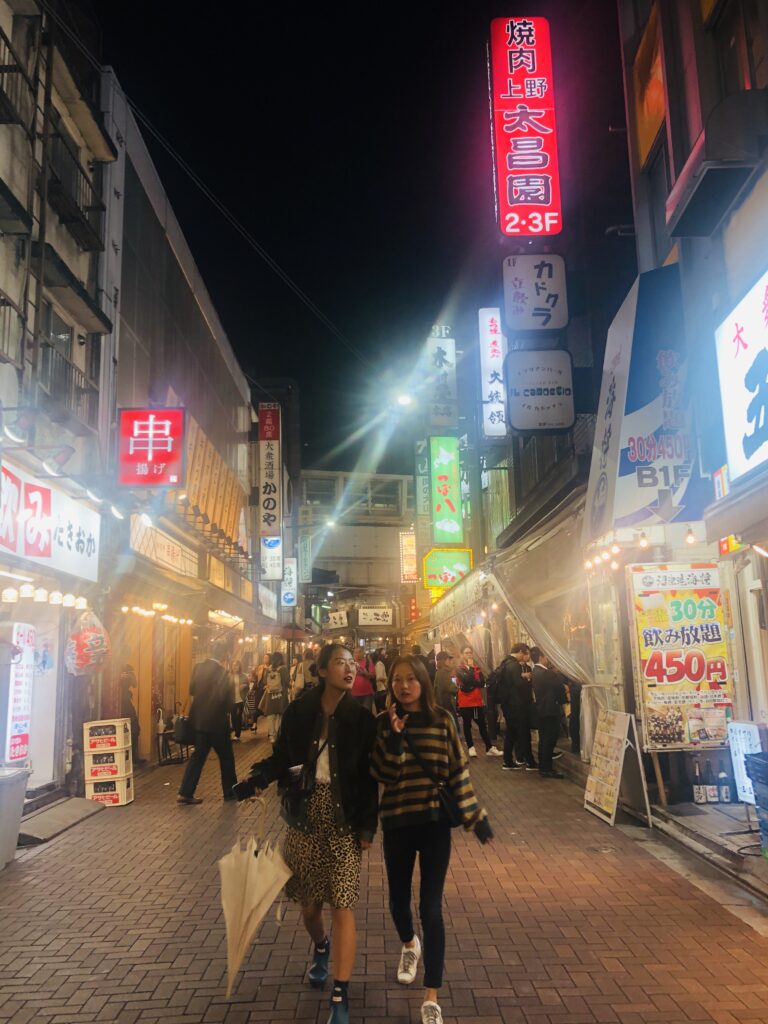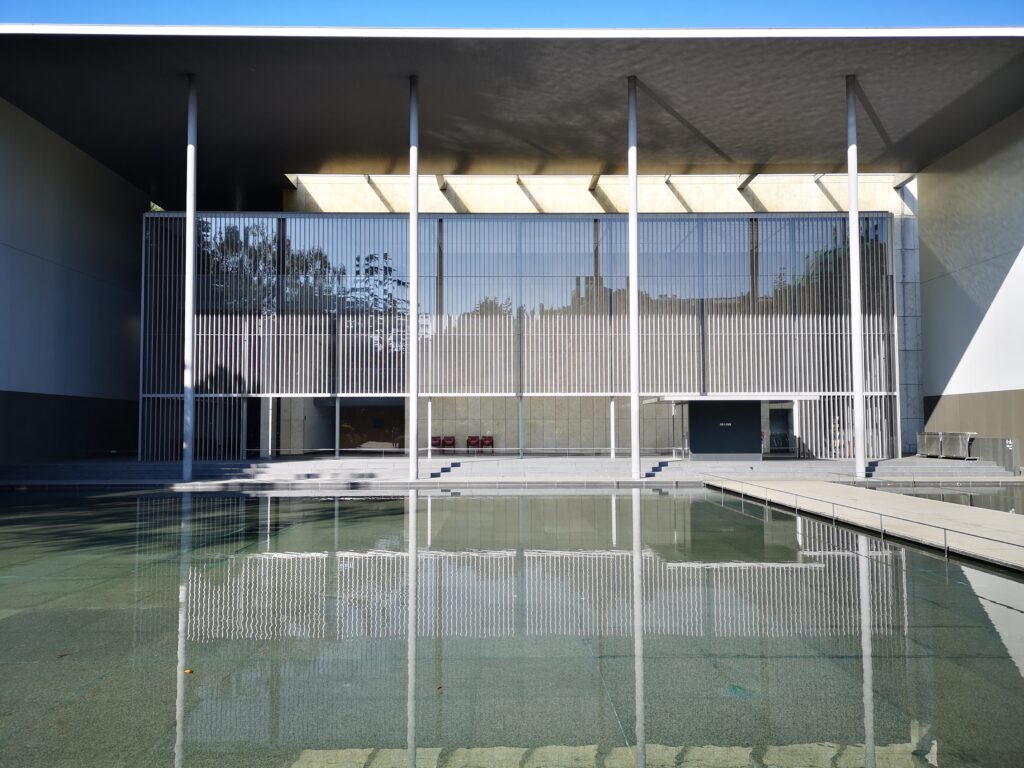
A memorable, mind-changing, and particularly enjoyable first day started at the Gallery of the Horyuji Treasures. The spectacular building is housing objects that were given reluctantly by the temples to the national museum, previously stored in the temples’ treasure storage. Relocating 150 sacred objects into the museum – and keeping the larger and prominently visible cult objects on the temple grounds – was not a purely voluntary move by the temples facing financial difficulties.
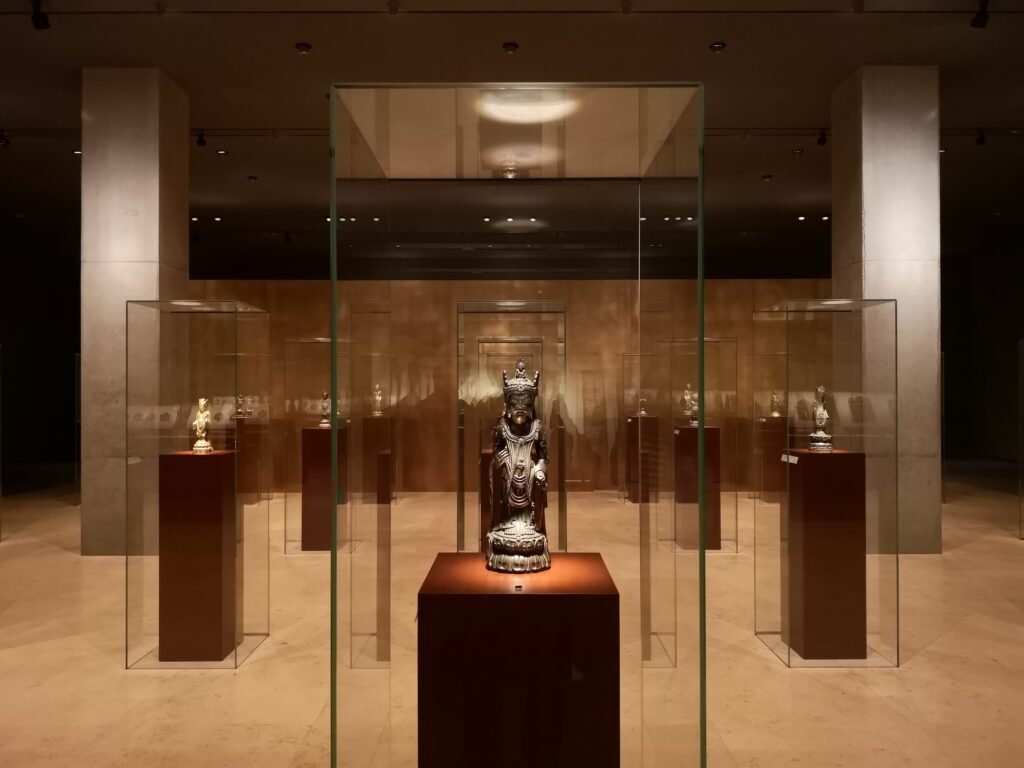
The display of small gilded bronzes, boxed each in a glass cube, solitary, at a safe distance, and illuminated directly from below and indirectly from above, these little boddhisattvas seem to be lost in time. As if each would silently claim to be the prime object, but all being prime objects in a Kublerian sense, bearing distinctively foreign but yet ambiguous ethnic traces of a distant origin on the mainlands. These smaller bronzes are now gazing all towards the entrance, facing their detached mandorlas neatly lined up at the opposing wall.

The beholder today is standing in the gap between formerly joined parts of venerated statues made in the 7th century, like in a virtual orchestra pit, a position raising the question what does ornament mean, what ornamentation? Their mute choral seemed to chant that nothing should be displayed without being contextualized.
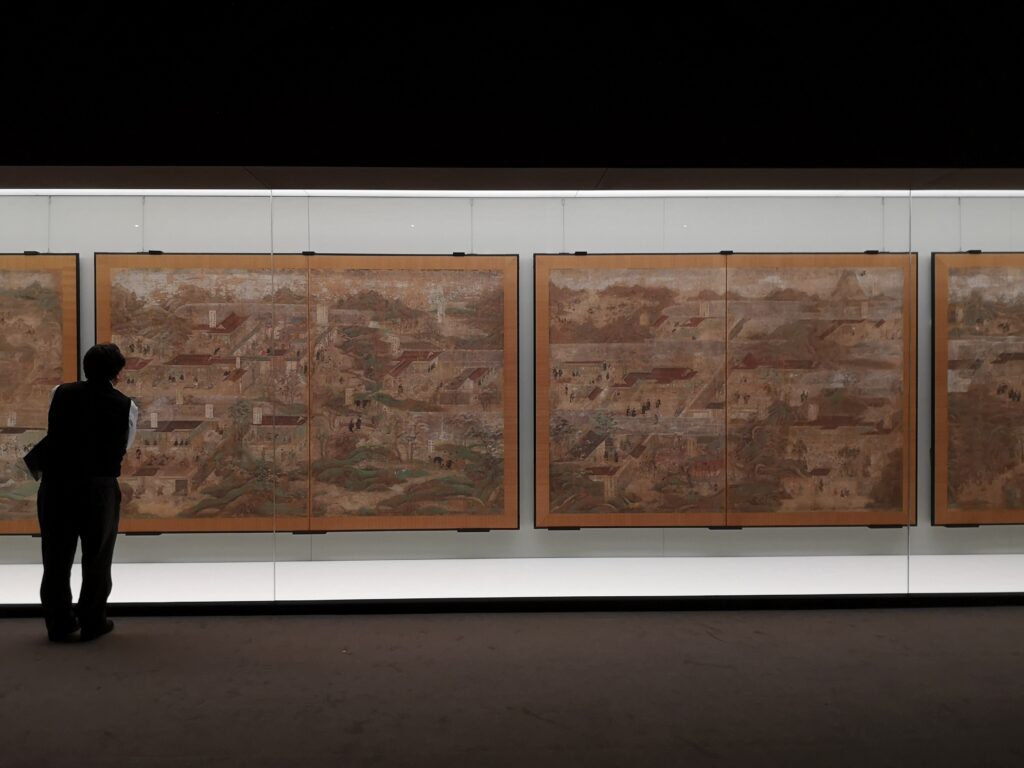
Their context today forms an upbeat in the dark cube with a clear choreography leading to the upper room. There we have had the very rare occasion of seeing the Illuminated Biography of Prince Shotoku.
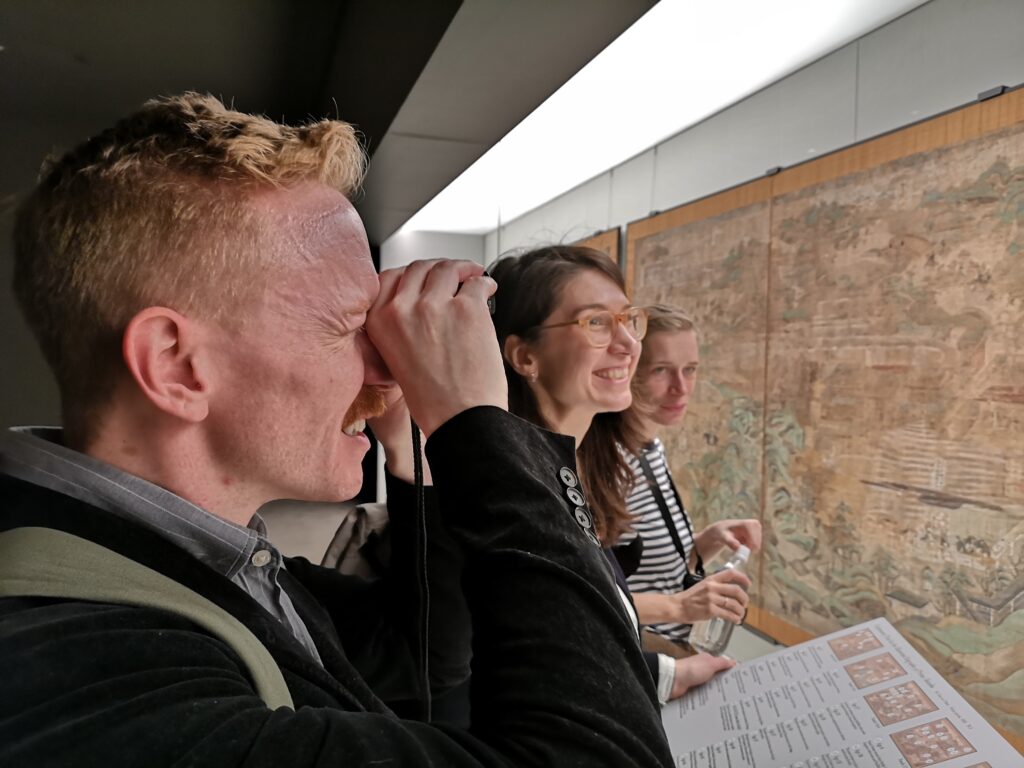
The five panels on display had previously been housed in a hall dedicated to the pictorial biography of Shōtoku. Painted on silk, they tell a richly illustrated story of a princely life, yet the order is neither chronologically nor topologically at first sight. Starting at the right, we enter the picture, moving towards the left. But we are encountering obstacles, the lines revealing the perspectival construction of each architectural element drawn with flying-off roofs, drawn in the Heian-period, illuminating a rather distant past. Later on, this will be a prominent feature of illuminations of the Genji tales in manuscripts or on screens. These lines pointing all towards the upper right reject our eyes’ movement towards the left, and push back our initial current of reading. But do we want to be read pictorially into a picture? Why this opposite movement, if the primary sources of these times in East and West describe looking at a picture as “entering” it, as walking mentally through the depicted space and time?
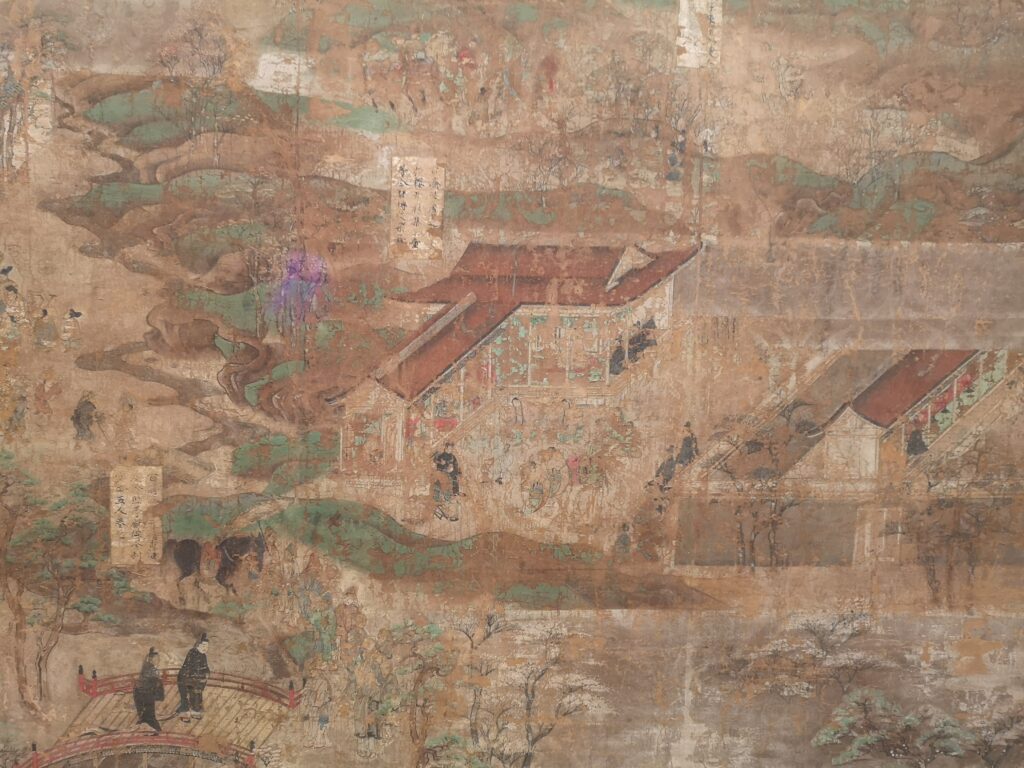
We count five different systems of representation, coexisting and overlapping here – 1. perspectival representation for the architectural forms, 2. movement of the people, 3. nature, 4. the overarching horizon building the stage for this Simultanbild, and 5. the little cartouches describing the scenes in writing.
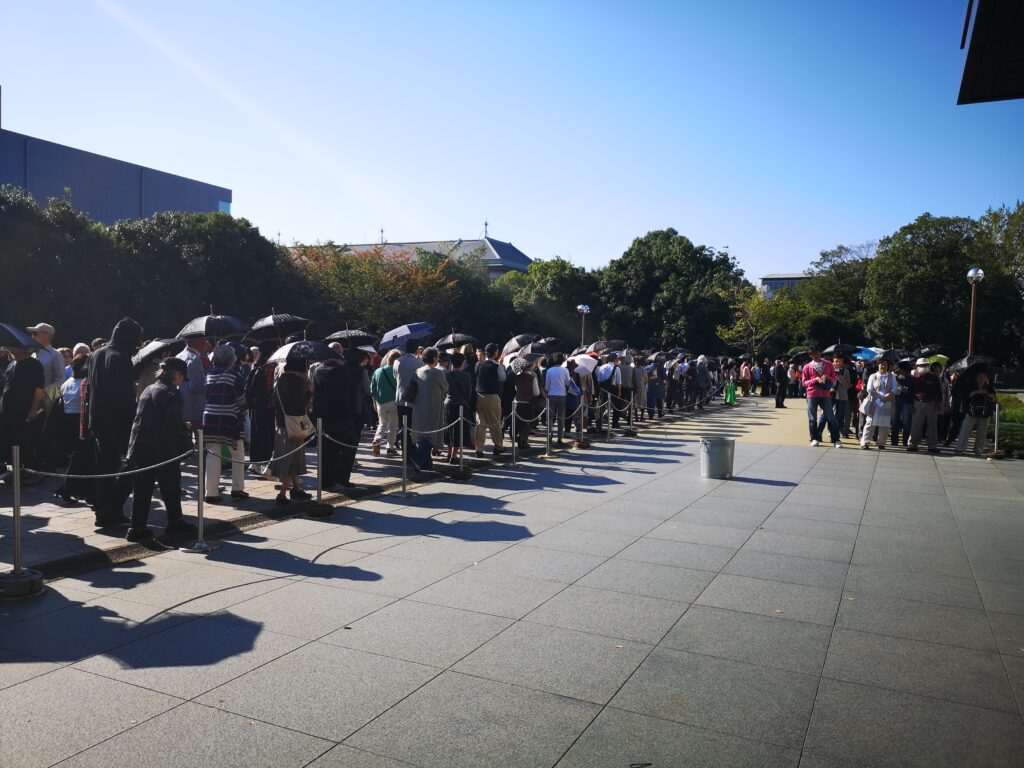
After queuing in the burning sun in front of the Heiseikan building, we entered the special Shōsōin exhibition, the treasures preserved through the imperial family. Because of the incoronation of the new emperor the show has two parts, and stunning objects, a once-in-a-lifetime encounter with objects usually stored in 206 chests in Nara. The open lock greeted us at the entrance, followed by breath-taking objects, such as a five-string lute, the dragon-headed ewer, red and blue painted ivory pieces, folding screens with calligraphy formed by pheasant feathers sewn to the panels, incense burners and incense with pieces only taken off every now or then as an extraordinary imperial honor.
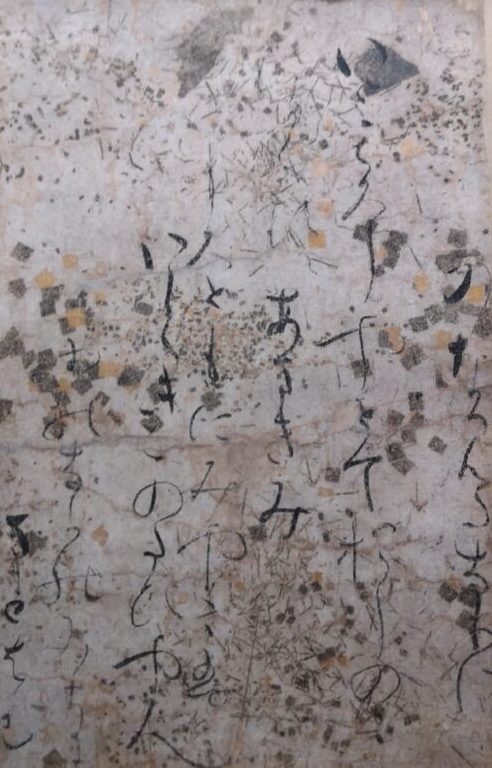
But the true highlight was a series of eye-opening revelations by Kris Kersey, illuminating Japan’s history in the Honkan building on the Tokyo National Museum Campus with a focus on the Nara-period to the collapsing of the Heian regime. Listening to him, one wants to be able to understand immediately each layer he unfolds mentally in front of our inner eyes, gliding over paper with embedded vines and phoenixes made with mica-powder pattern, and be able to read every word of those poems, using the paper format like a stage with the golden cut, arranging thoughts and letters, with their bodies and gestures dancing over the sheet’s surfaces, drawn by the quill gliding over the structured paper made in the 7th century. Gold and silver sprinkles, script systems, existing parallel next to each other until the 19th century.

Afterwards we strolled along more profane objects, the shell-matching game with a box decorated with the Genji-tales, admiring the shadows in perspective in the golden era of multiple color-plate printing from the late Edo-period, and concluding with thoughts how one could re-write the history of netsuke, from a hobby-horsian view (Gombrich), or like Camille, as reminiscence of an other-wise unrecorded yet relevant past of the profane everyday world.
